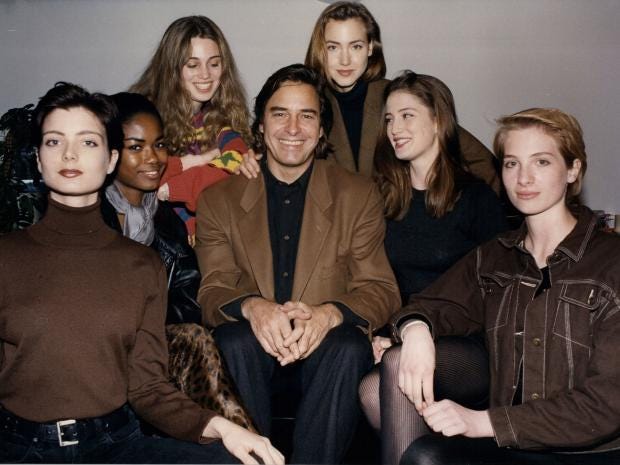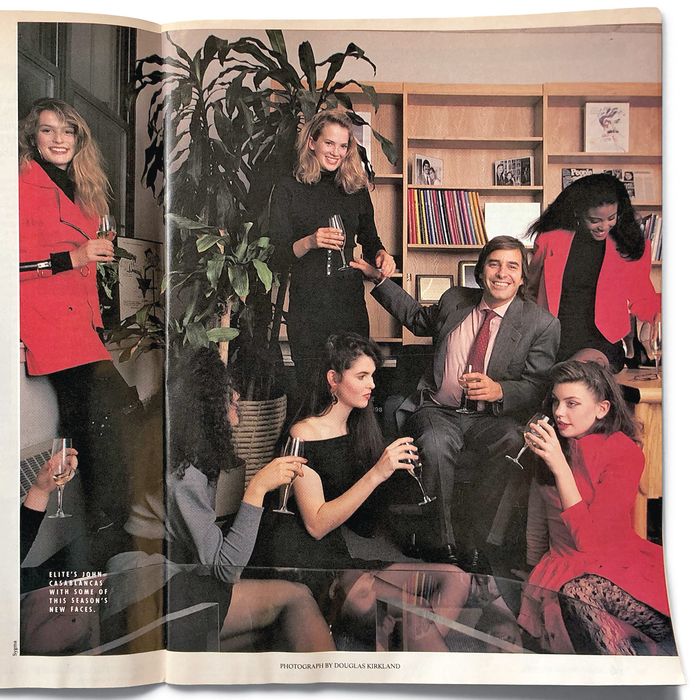

His relationships were far beyond complicated, though he denied the rumours that he had charmed entire portfolios of Elite employees into bed. He continued with scouting and briefly advised Elite after its post-bankruptcy restructure in 2004.Ĭasablancas was frank about his personal preference for girls of only just legal age – "child women". In semi-retirement, he still had to deal with retrospective lawsuits over price-fixing and working conditions. Casablancas was not implicated, but he had had enough contention and resigned. However, he continued to work for the agency until a 1999 BBC documentary, later withdrawn, showed Elite agents in Europe boasting of sex and drug exploits with young recruits. In 1990, he sold Elite, which was by then developing a worldwide structure of management, scouting and training. The rates for models, in oversupply as a result of Casablancas' seductive myths of modelling and agenting, plummeted.
#JOHN CASABLANCAS STEPHANIE SEYMOUR MOVIE#
Supermodels proved just another fashion to be superseded in ads and on magazine covers by movie stars and celebrities who based their self-projection acts on supermodel antics. He later called them selfish, spoilt trouble-makers with brainless entourages: "Impossible. But the models cost Casablancas weary grief. Prestige and notoriety were the combination that sold best. Many were discovered through Elite's annual modelling contest, which began in 1983. Then came Cindy Crawford, whom he persuaded to pose for Playboy, Naomi Campbell, whom he hired and fired on a loop, and thought "odious", Claudia Schiffer, Gisele Bündchen, Heidi Klum and Evangelista. His first supermodel was Christie Brinkley: he tripled her earnings in a year. Their high fees and high visibility, especially in crossovers into the new music videos and MTV, built immediately recognisable, saleable identities.

His genuinely original perception was to realise that the florid couture presented since the 70s in catwalk shows that were more like rock gigs had created an opportunity for large-scale, Warholian stars. A period of "model wars" ensued in which they poached each other's signings Ford and Cooper sued Casablancas for breaking territorial treaties, but lost as the arrangements were not in writing. By his own admission he was "a competitive, aggressive and sometimes ruthless agent" who fought to represent established names, and in 1977 he moved to New York, where he directly challenged Ford and her rival, Wilhelmina Cooper. He did not, however, share Ford's famous finishing-school rulebook for her models, and thought her a prude.Ĭasablancas mingled in the music business and pop arts culture and did not care how wild the talent was, as long as the pleasure showed in the shots. The whole business was still small enough for most players to know each other – Casablancas ceded models to, or shared them with, the all-important Eileen Ford agency in New York. In 1971, Casablancas upgraded to a more chic venture, Elite Model Management. The agency wobbled financially until he brought in his brother, Fernando, to manage it. The idea was to scout in Scandinavia, the source then of most models for the mainland European market (not the British – we grew our own), or for more profitable export to the US. She encouraged his half-thought-out idea for an agency, to be named Elysées 3. He was living alone in a hotel in 1967 when he met Jeanette Christjansen, 19, a Danish model, who became his second wife. At around this time, he married his French girlfriend, Marie-Christine the couple split up, though, on their return from Brazil to Paris.


 0 kommentar(er)
0 kommentar(er)
